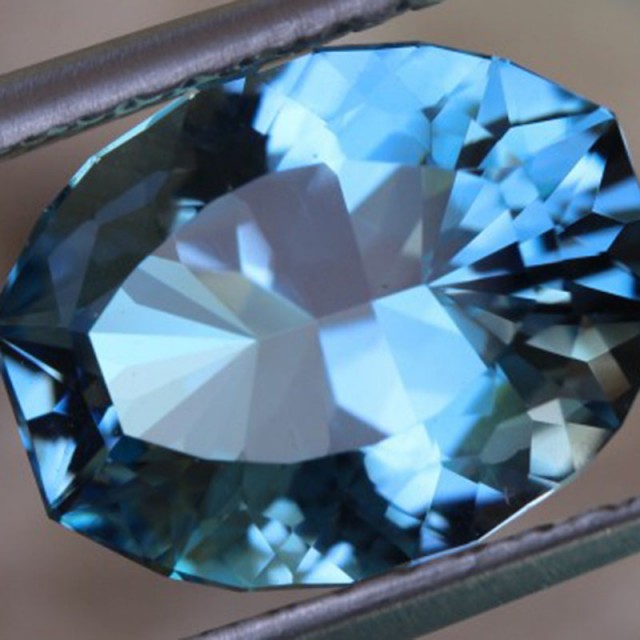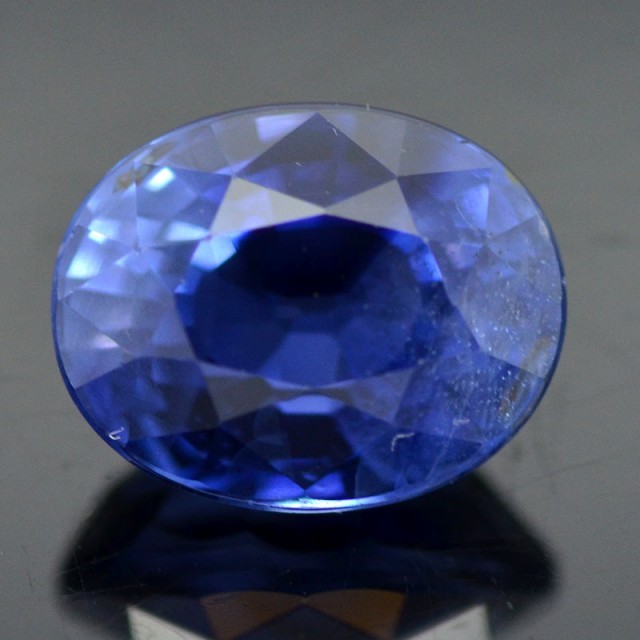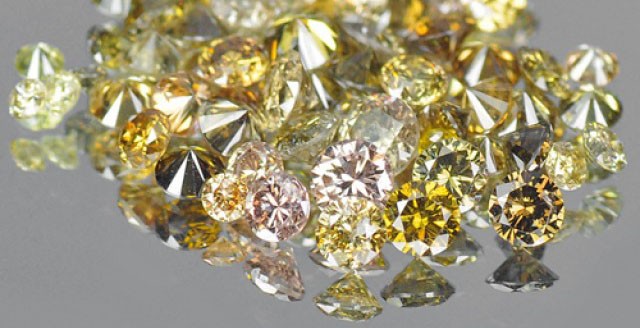
Published at 5th Mar 2019
Modified at 2nd Aug 2023
Are Irradiated Gemstones Dangerous?
 Out of all of the gemstone treatments currently on the market, there is one treatment that always raises questions. That treatment is irradiation.
Out of all of the gemstone treatments currently on the market, there is one treatment that always raises questions. That treatment is irradiation.
When the word “irradiation” is whispered, the first thing that springs to mind is: is it safe? Good news: yes it is. We will explore why gemstones are irradiated and what the NRC (Nuclear Regulatory Commission) does to ensure your safety.
The gemstone that has caused the most much discussion is blue topaz. Since the 1980s, this gemstone has routinely undergone irradiation to give it the blue color we all know and love. There are two methods for irradiating blue topaz, and they both involve types of nuclear reactors.
The first method is to use a stream of electrons to induce the color. The second method is to use a stream of neutrons.
While the electron method produces topaz that does not pose a hazard to humans, topaz treated with the neutron method can continue to emit radiation for years. After extensive research from various bodies including the NRC, rigorous checks have been put in place to ensure all neutron-irradiated blue topaz that comes to market is safe to handle.
What Gemstones Are Commonly Irradiated?
The list below gives examples of the gemstone colors that can be achieved with irradiation. This is not a complete list and other color variations are available.
Topaz: Colorless before treatment. Blue after treatment.
Diamond: Colorless to Green / Blue
Pearls: Light color to Gray-Blue
Quartz: Colorless / Yellow / Pale Green to Brown / Amethyst / Smoky / Rose
Tourmaline: Colorless to Yellow / Brown / Pink / Red


Irradiation Processes
There are three main ways to irradiate gemstones. Each method uses a different facility and can have different effects on gemstones.
Neutron Bombardment – Use of a nuclear reactor
Electron (Beta) Bombardment – Use of an accelerator
Gamma Radiation – Use of a cobalt-60 facility (these facilities are commonly used to sterilize medical equipment)
The irradiation process can be thought of in terms of balls. The neutron method fires large tennis balls at the subject to induce the color. The electron method uses tiny balls to fire at the subject. Gamma radiation uses microscopic balls with huge amounts of energy to induce color.

Does Irradiation Make The Gemstone Radioactive?
The longer a gemstone is exposed to irradiation the more chance of the stone becoming radioactive. The reason why gemstones become radioactive is if impurities within the gemstone become active. Stones treated with either electron or neutron irradiation will remain radiaoactive for a period of time. Stones treated with gamma radiation will not become radiactive.
For stone treated with electron irradiation the radiation level of the material that comes out of the reactor is generally deemed safe to handle by the NRC. Even still there are strict guidelines in place to ensure that the Topaz is set aside for a number of months. Remember that radiation decays over time so if the stones are safe to handle straight out of the reactor they are safe to handle once they come to market.
Neutron radiation takes a longer period to become safe. According to the NRC the average time for freshly neutron irradiated Topas to become safe is 12 – 24 months.
How Much Radiation Will I Be Exposed To?
Radiation is everywhere. It is a natural part of life and we actually can’t live without it. Let's do some quick comparisons. Radiation is measured by millirem or Radiation Absorbance Dose.
A 6-carat topaz worn for a year (assuming the radiation level is at the maximum the NRC deems safe) = 0.03 millirem
Now, let's compare that to some other common things, all based on 1-year exposure.
Porcelain Crown or False Teeth = 0.07 millirem (2.3x that of Topaz)
Chest X-ray = 10 millirem (333x that of Topaz)
Food and Water (yes, even these have natural radiation) = 30 millirem (1,000x that of Topaz)
Trans Atlantic Flight = 2.5 millirem (83x that of Topaz)
Watching TV = 1 millirem (33x that of Topaz)
How Does Irradiation Cause Color?
This is a very complex subject, so let's break it down with some examples. We'll explain the two ways gemstones get their color: chromophores (impurities) and color centers (defects).
Chromophores
Chromophores are impurities in minerals that cause color.
Take sapphire for example. Pure sapphire is clear. Add in titanium as an impurity and it turns blue. Add in iron, it turns yellow. Add chromium, it turns pink. Add iron and chromium, you get orange/pink (padparadscha).
This is the most common way gems get their color. So, if you want to enhance a sapphire, you can diffuse titanium to it (through surface diffusion) and create a bluer stone.

Color Centers (Defects)
Now, let's look at diamonds. All diamonds are pure carbon. So, how do they have pink diamonds, yellow diamonds, and red diamonds? The answer: a color center. This is a defect in the crystal structure of the gem, and this defect causes color.

If you take kunzite, topaz, hiddenite, or diamond and try to cause a defect in the crystal lattice, you will induce a color.
How do you cause a defect? You smash the atoms inside the crystal. This is where the electron radiation and neutron radiation come in. You literally smash the gem with radiation to cause a defect that induces color.
Is The Color Permanent?
These defects can be fixed by applying energy to the gem. In the case of kunzite, this energy is in the form of UV radiation from the sun. The energy from the sun repairs the crystal structure and removes the pink color from the gem.
You will see plenty of hiddenite in the market that has been irradiated. It has a color center induced, causing the green color. This color is sensitive to sunlight just like kunzite.
However, the color in topaz and tourmaline, for example, is stable. The process for creating the blue color in topaz involves irradiating the gemstone, then heating it. This heating process actually stabilizes the color, creating a gem that will not fade or deteriorate over time.
Some of the brown topaz you will see is the result of electron radiation. If this topaz is heated, it will turn blue and stabilise the color. However, a few years ago someone decided they would Irradiate topaz. But, when it turned brown with an orange tinge, they decided not to heat it to turn it blue but sell it as Imperial Topaz. Sites like Gem Rock Auctions do not allow these types of stones to be sold as Imperial Topaz.
Now that you know how safe irradiated gemstones are, it is time to decide if you really want to wear those false teeth. After all, would you rather have a set of false teeth or twice the number of topaz gemstones?
Shop For Gemstones
Search the Gemstone Encyclopedia
Related Auctions
Related Articles
Originally the Birthstones or gemstones were associated with a zodiac sign or the month of a individuals birth. Find out what your stone is and view the stones we have for sale
8th Feb 2021
Quartz and Topaz are two of the most common minerals on the planet. They also look very similar. Let's look at some properties of them and compare Quartz and Topaz.
23rd Oct 2018
Gemstones and crystals are capable of absorbing and conveying energy, that’s why it’s important to cleanse, re-charge and program your stones so that they may achieve their best potential.
9th May 2018
Latest Articles
Tantalite is a group of red, brown, or black minerals containing the rare and valuable element tantalum. Discover the uses, history, prices, and properties of tantalite gemstones in this guide!
11th Nov 2024
Hodgkinsonite is a very rare collector’s gemstone known for its vibrant pink or purple hues, only found in New Jersey, USA. Learn hodgkinsonite’s prices, history, properties, and traits in this guide!
9th Jun 2024
Canasite is a rare mineral usually found as greenish-yellow inclusions in charoite but also known as a purple gemstone. Learn canasite’s history, varieties, properties, and prices in this guide.
27th May 2024
Article Categories
How To's is where you will find helpful articles from gem Rock Auctions on how to cut gemstones, select gemstones and buy gemstones.
9 Articles








